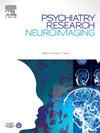(Interfering) Cortical mechanisms of standing balance and cognition in old-age depression: A functional near-infrared spectroscopy (fNIRS) study
IF 2.1
4区 医学
Q3 CLINICAL NEUROLOGY
引用次数: 0
Abstract
Major depressive disorder in old age can cause changes in the cerebral cortex that might lead to postural imbalance and thus increase fall risk. We aim to examine cortical activation during standing balance in depressed older patients compared to healthy controls and to determine how an additional cognitive task affects this activation. Eleven older patients (age ≥65 years) diagnosed with major depressive disorder and sixteen age-matched healthy controls participated in the study. Functional near-infrared spectroscopy (fNIRS) was used to assess cortical activation of the prefrontal (PFC) and motor (MC) cortex during standing balance with eyes closed under single and dual task (counting backwards). The present study generally revealed tendencies in the MC – and partly the PFC too – for more activation whilst balancing compared to baseline. Also, in the MC, patients tended to show more cortical activation compared to controls and dual task tended to elicit more activation. The results suggest that depressed older patients, to compensate for their illness, may require increased cortical activation to perform motor and cognitive tasks than healthy controls. The absence of PFC activation in the main analyses may be related to the small participant number and possibly to too simple task conditions.
(老年抑郁症患者站立平衡和认知的皮层机制:功能性近红外光谱(fNIRS)研究。
老年重度抑郁症会导致大脑皮层发生变化,从而可能导致姿势失衡,进而增加跌倒风险。与健康对照组相比,我们旨在研究老年抑郁症患者在站立平衡时大脑皮层的激活情况,并确定额外的认知任务会如何影响这种激活。11 名被诊断为重度抑郁症的老年患者(年龄≥65 岁)和 16 名年龄匹配的健康对照组参加了研究。研究人员使用功能性近红外光谱(fNIRS)评估了闭眼站立平衡时在单一任务和双重任务(倒数)下前额叶(PFC)和运动(MC)皮层的激活情况。本研究普遍发现,与基线相比,MC(部分也包括前额叶)在平衡时的激活程度更高。此外,与对照组相比,在 MC 部分,患者倾向于表现出更多的皮质激活,而双重任务则倾向于引起更多的激活。这些结果表明,与健康对照组相比,老年抑郁症患者可能需要更多的大脑皮层激活来完成运动和认知任务,以补偿他们的疾病。在主要分析中没有发现前脑皮层激活可能与参与人数较少有关,也可能与任务条件过于简单有关。
本文章由计算机程序翻译,如有差异,请以英文原文为准。
求助全文
约1分钟内获得全文
求助全文
来源期刊
CiteScore
3.80
自引率
0.00%
发文量
86
审稿时长
22.5 weeks
期刊介绍:
The Neuroimaging section of Psychiatry Research publishes manuscripts on positron emission tomography, magnetic resonance imaging, computerized electroencephalographic topography, regional cerebral blood flow, computed tomography, magnetoencephalography, autoradiography, post-mortem regional analyses, and other imaging techniques. Reports concerning results in psychiatric disorders, dementias, and the effects of behaviorial tasks and pharmacological treatments are featured. We also invite manuscripts on the methods of obtaining images and computer processing of the images themselves. Selected case reports are also published.

 求助内容:
求助内容: 应助结果提醒方式:
应助结果提醒方式:


